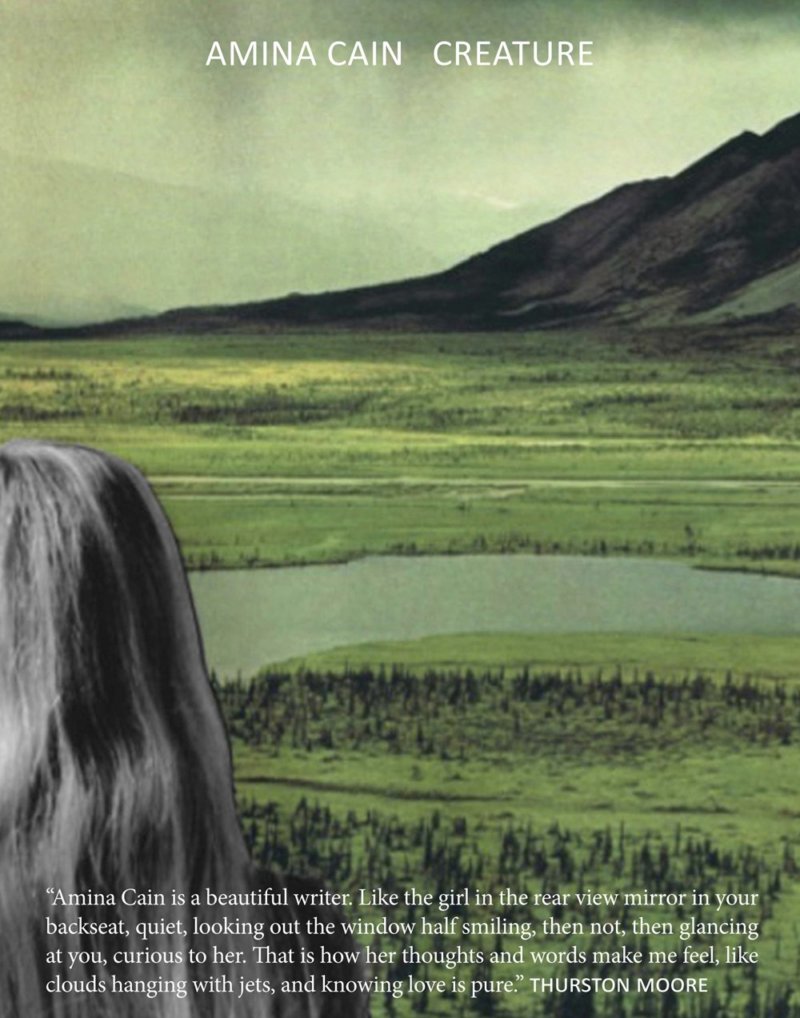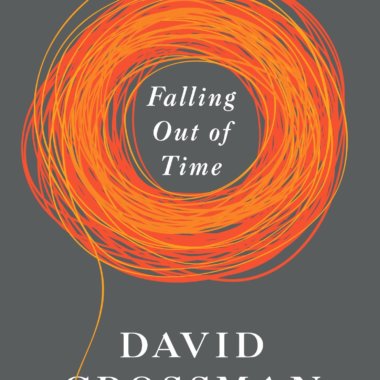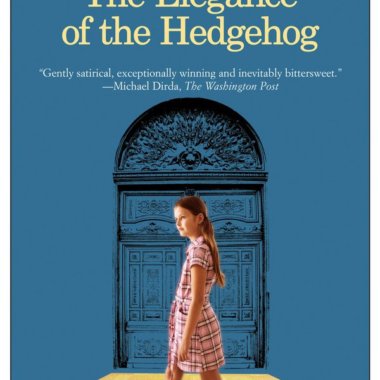The mind—or body or self—is central to Amina Cain’s storytelling. This is the way it is with Creature, her collection of fourteen stories: elusive, introspective, intuitive. Stylistically, Cain absolves the beginning, middle, and end of linear narration and chooses instead a non-sequential narrative that defies the literary formalities of time and space. More mood than logic, more feeling than plot, Cain’s stories override chronological time and slip into an interrogation of mind to exploit the multiple meanings hidden therein. Whatever there is of a story line, it is bound within a reality of the mind’s inquiry into itself. In the short story “Words Come to Me,” the character explicitly states the theme of Creature: “I am trying to show the mind.”
In the story “Queen,” the unnamed character is separated by the reality outside, “as if everywhere I go I am separated from what I see.” Time and space are reordered, disordered, almost dissolved. Describing her activities as a maid, she strips the sheets, looks at the “beak of a bird” (the title of a previous story in which nowhere does a bird appear), the character named Marguerite gives her a paper to put in her pocket, and you begin to wonder if the narrator and Marguerite are one and the same. Yet the mood of “Queen” evokes a powerful engagement while you try to grasp the semblance of a narrative that moves forward in a straight line. Then there is this illumination: “‘Forgive me if I add something more about myself since my identity is not very clear, and when I write I am surprised to find that I possess a destiny. Who has not asked himself at some time or other: am I a monster or is this what it means to be a person.’”
In “A Threadless Way,” the first story in the collection, time and space flow in a continuum. Where is the arc of the story, the destination? The character moves from her old locale to a new loft in a desolate place. She has a limp, but we are not sure until a guy who lives in a tent says to her, “You are bent in a weird way.” She holds up her arms in the rain and says, “I know, it always has. Both of them.” Although “A Threadless Way” has the threads of a plot—the character lives across the street from a school of architecture, wanders the city and sees a slave exhibit at the historical museum, visits a cornfield, climbs rock formations with an old friend—these points of information do not supply the action. Underlying this surface narrative is the introspection that Cain is after, a prelude to the stories that follow. The character reflects about her past life and her new one: “Back then it had seemed as if I was living a life it had already ended. Now I could hardly take in enough.” Is this a threadless way of envisioning a different life?
In “Attached to A Self,” the character visits a monastery to sit zazen, to study sutras, to live in community, to see the mind—her mind. What constitutes the internality of her mind? Clues appear: “I don’t know yet what I’m walking around in. I feel lost.” “Do you think you are walking around in a web?” “‘Is the body a religious practice?’” The clues are like koans she poses, as she feels the distance between herself and her “self.” If they stop talking to one another, she would then have to find a different way to communicate. And if she were forced to do that, would it really be her “if I’m not there?” The Diamond Sutra she studies at the monastery reads in part: “However many beings there are in whatever realms of being might exist, whether they are born from an egg or born from a womb . . . in whatever conceivable realm of being one might conceive of beings, in the realm of complete nirvana I shall liberate them all. And though I thus liberate countless beings, not a single being is liberated.” This sutra makes her feel like throwing herself against a wall, only coming “to know how flat and hard it is.” Perhaps she realizes that being attached to the self is like trying to find answers to the sutra, when there are no answers. They are only flat and hard.
The motif of self-not self, split selves, existence-nonexistence imbues the mood of Creature, but there is also the interesting motif of lameness. The presence of limp arms, limp foot, legs of different lengths would seem to anchor the stories in a literal landscape. Not so. In “The Beating of My Heart,” the literality is compromised by the negotiable boundaries among the three characters: a woman who hobbles because one leg is shorter than the other; a man who inherits money and gives it all away to become a tramp; and an actor who plays the role of the lame woman, performed after the woman dies of an infected foot. Shifting points of view blur any action that might transpire in “The Beating of My Heart”; the story becomes instead a series of acts—of the heart. The clues are many: The man gives most of his inheritance to an orphanage, burns the rest of it in a “desert wash,” and wanders, never wanting to know where he is. “Everything else felt wrong.” The woman with the lame leg, who begs for food and makes “clopping sounds” as she walks, thinks, “This is who I am …It doesn’t matter what I’m wearing or what my feet sound like.” The actor who plays the poor woman says, “I study everything around me. I don’t take off the foot, for it is the meaning of my life.” The characters offer different answers to the beating of their hearts, but there is one answer that resonates: “This is the place where your life unfolds. You push something back so the other thing can come forward. This thing is anything, or it is nothing, and you see it be nothing.” Is the beating of the heart a koan to study for every person alive?
In the following stories, the mind is the subject, the self is the analyzed, the body is sometimes the separated. “Gentle Nights” uncharacteristically functions within the parameters of a typical story, yet the body remembers friendship and wants its own relationship and then the mind takes over—or maybe not. In “There’s an Excess,” her husband tells her that she thinks too much about herself. She is “always doing self-analysis,” most likely because she likes to figure things out, to come “close to knowing things.” In “Furniture, Table, Chair, Shelves,” the character inhabits her farm poetically, writes musical compositions, used to dance, watches palm trees in the air. Her perception leads her to this: “What I appreciate most about compositions, dance, and the air is what I appreciate about people. To go out and meet them you must go incredibly far.”
The closing story in Creature is titled “Delicately Feeling,” a curiously dreamlike piece. The character Josephine is intimately connected to a couple, a man and woman she meets at a play, and the three of them intersect in a strange physical and mental dance. She, Josephine, claims she does not crave either the man or the woman, and yet she tells the story as if she and the couple are physically connected: they are “three bodies in bed.” When she thinks of the couple, she is in both places at once—here and there, in their house and her house. The mind has jurisdiction and supplants the physical: “I am aware of nothing but the inside of my mind.”
How the mind and body struggle to make sense of this thing we call a person is a primary theme in Creature. Even as Cain’s stories are about the struggle between mind and body and self, the focus on the mind is not a solipsistic enterprise but rather a humanistic journey toward more awareness and more connection. Although Cain’s stories seem at first reading to interfere with the typical operation of plot and character, Creature offers something more instructive: A study in how mood and tone and unconventional characters can bend the form and content of the short story. In both composition and meaning, her stories enlighten and lead us toward a greater humanity of value and goodness. There is something quite interconnecting in this closing paragraph in “Delicately Feeling.”
But here or there is a tapestry of happiness and pain and joy and terror,
so it doesn’t really matter, a tapestry so large and colorful you can’t
see it all at once. It’s hard to take in the number of lives imprinted upon
it. If you get close you see one life and something of another, touching it.
This is the self, the not-self, and all the others, here and there.



